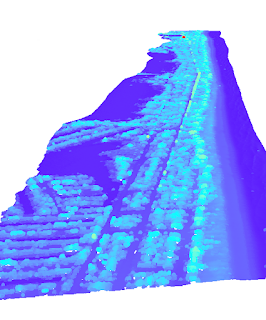Precision and Accuracy
Three statisticians go duck hunting. The first statistician shoots and misses just left of the duck. The second statistician takes aim, shoots, and misses just right of the duck. The third statistician jumps up in joy and shouts, "We got 'em!"
Before any spatial project can be underway, a thorough analysis of measurement quality is essential. Accuracy refers to the truthfulness of a measured value. Relatedly, precision refers to the consistency of measurements. Repeated measurements of similar value indicate minimal random error.
A reliable analysis requires both accuracy and precision. It is critical then to check for variability and potential bias. In this scenario, data validity was performed on horizontal accuracy and precision.
Fifty (50) survey points were provided to us. First, we checked for precision by calculating the average of the repeated measurements. A new average point feature class was created by calculating the mean longitude and latitude of all 50 points. The average point was then spatially joined with the original survey points. Furthermore, the distance between all points and the average were calculated. These distances were classified into three percentiles of 50%, 68%, and 95% with corresponding buffers. The 68th percentile indicates that the data falls within one standard deviation from the mean, which is used to identify acceptable tolerance limits. This process was repeated for vertical precision. Finally, a “true” survey point was provided and was compared to the average point’s data for accuracy.
Average point elevation = 28.5 meters
Average point longitude = -82.318888
Average point latitude = 27.82585
Horizontal precision (68%) = 4.55 meters
Vertical precision (68%) = 5.89 meters




Comments
Post a Comment